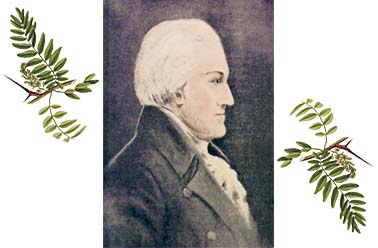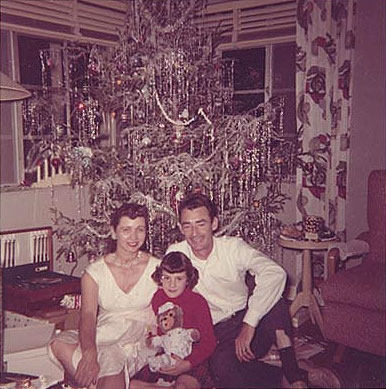A few months ago, they re-paved my street. No, I don't know who "they" is. The city? Some contractors? Anyway, they scraped off the old asphalt one day and then they came back on a different day and put down new asphalt. The construction equipment was pretty huge and loud and impressive, so I took some pictures.
Naturally, as your intrepid Apple Lady, I have also looked up what these machines are, so I'll provide a little bit of information about each one.
 Asphalt or Cold Planer
Asphalt or Cold Planer
(Photo from Baucm.com)Asphalt Planer or Cold PlanerThe first machine may have been the most impressive. This one I thought of as the asphalt scraper. But actually, to people who sell these sorts of things an asphalt scraper is a shovel. This machine is called an
asphalt planer or a cold planer.
I had to split the video into two parts so I could upload it to Blogger. Part 1 is the faraway big picture version; part 2 gives you some close-up views.
The teeth of this machine is a rotating cutter drum with spikes on it. As the vehicle moves slowly forward, the drum underneath spins so that the spikes bite into the pavement, chopping the pavement into pieces. The drum gets pretty hot, so a system continually sprays water over the drum to keep everything from overheating.
 Drum for tearing up asphalt
Drum for tearing up asphalt Drum with more teeth for tearing up concrete.
Drum with more teeth for tearing up concrete.
(Photos and drums from Trackless Vehicles Ltd.)There are some smaller walk-behind versions of this type of machine. They're referred to as "hand" cold planers, I think because instead of sitting in a big giant honking thing to operate it, you can walk behind it and push it with your hands, even though it is power equipment.
 Here you can see the underbelly of a hand cold planer. Even though I didn't see one of these in action, I thought it might be helpful to show you this version. Because according to the specs I've seen, the drums on the big honking machines are 7'2" long, which is apparently the standard.
Here you can see the underbelly of a hand cold planer. Even though I didn't see one of these in action, I thought it might be helpful to show you this version. Because according to the specs I've seen, the drums on the big honking machines are 7'2" long, which is apparently the standard.
(Photo from Taguchi Industrial Co., Ltd.)The chopped-up pieces of asphalt or concrete are funneled up out of the machine on a conveyor belt that extends out of the machine. The conveyor belt has to be very sturdy and durable to carry lots of debris, it has to withstand high temperatures, and it's usually tracked so that the pieces don't slide back down the belt but are carried up and out of the machine. The pieces drop into a dump truck that follows behind the planer.
 This is a different type of machine, a miller, but it also uses a conveyor system. The inset shows you what the conveyor belt looks like.
This is a different type of machine, a miller, but it also uses a conveyor system. The inset shows you what the conveyor belt looks like.
(Photo from Everpads)There are lots of varieties of asphalt planers. Some are as wide as a highway lane, others are half-lane widths or narrower. You can get them with two, three, or four tracks (like wheels).
The enormous planers like the one I saw weigh somewhere between 6.5 to 8.5 tons.
In all cases, the drum seems the most crucial part. People selling used cold planers online (there are a lot of them for sale, surprisingly) talk about the relative newness or sharpness of the drum as its main selling point. The Roadtec RX60b, which is what is shown in my video and which apparently they don't make anymore, has a standard 7'2" drum and a 750 horsepower engine. A used 1998 asphalt planer, by the way, sells for $85,000. Newer ones don't have prices posted, so you know they cost a sweet bit of cash.
Asphalt PaverThat machine went by on day one. Day two (I don't actually think it was the next day, but a few days later) they came back with more machines. This time, they were laying down new asphalt.
To lay down the asphalt to their satisfaction, they used 3 types of machines. The first was the
asphalt paver. Asphalt paver with two guys helping to spread out the asphalt more evenly.
Asphalt paver with two guys helping to spread out the asphalt more evenly.
(Photo by the Apple Lady)The asphalt paver has a dump truck driving in front of it, feeding in the new asphalt. The paver itself is made up of two major components, the tractor and the screed.
The tractor part is pretty much the drive train, the thing that makes it go. It also includes a means of getting the asphalt from the hopper in the front to the back of the machine. Some pavers use an internal conveyor system to move the asphalt within the machine, others have simply a chute that lets gravity carry the asphalt to the back of the vehicle.
In sort of the mid-section of the paver, the tractor distributes the asphalt onto the pavement. I had thought in my photos that the back end of this machine had all sorts of nozzles lined up across the back and the nozzles were spraying the asphalt onto the surface. But now, since my photos aren't clear enough and based on the descriptions I've read of these various equipment types, I'm not so sure.
At the very back of the machine is the screed. The screed vibrates and tamps down the asphalt. It's heated, either by diesel fuel or by electricity, which helps melt the asphalt and keeps it from sticking to the screed.
The screed is where a lot of asphalt-paving-equipment people focus their attention. The screed comes off and you can buy different ones with different specs, depending on the thickness of the material you're putting down, or how wide the road surface is that you want to pave at one time, or how compressed you want the asphalt to be.
 Diagram of a Carlson Paver with some of the parts labeled to try to entice you to buy it. The label that I think is most interesting is the "extendable walkways," which explains how the guy in my video could stand on the back of that machine and not melt his shoes or get hurt.
Diagram of a Carlson Paver with some of the parts labeled to try to entice you to buy it. The label that I think is most interesting is the "extendable walkways," which explains how the guy in my video could stand on the back of that machine and not melt his shoes or get hurt.
(Photo from Carlson Paving Products)Pavers weigh about 34,000 pounds. I don't know why I keep looking up how much these things weigh. I guess I'm trying to get at the hugeness of these machines.
Once again, I've got some videos for you. The first one zooms in but not quite clearly enough to see how the asphalt is put down on the pavement.
The second one follows the paver for a bit, then swings back to the roller running behind the paver.
Asphalt Rollers or CompactorsNow we come to the third part of the process, which was compressing the asphalt still further. They did this using rollers or compactors.
There are lots of different kinds of rollers which vary in size from 1 ton to 5 tons, and they vary in complexity. The point of the rollers is to pack down the asphalt and to make it smooth and even. In resurfacing my street, they used two different kinds of rollers.
The first kind was larger, and it had a roller in front and in back. These are called
articulated rollers. As you can see in the photo below, there's a joint where the two halves connect. That joint allows the two rollers to move independently of each other, which requires a lot more control on the driver's part. This also enables the operator to get a lot closer to the edge of the road bed, for example, or to move one side to smooth out one particular section or another.
 Articulated asphalt roller
Articulated asphalt roller
(Photo by the Apple Lady)Like the pavers, the rollers require water to be sprayed over the business end of the equipment. The hot water and resulting steam keeps the asphalt from sticking to the roller and allows the asphalt to be compressed evenly without getting picked up onto the roller in clumps. In the photo above, you can see the steam coming off the top of the rollers.
According to one manufacturer, the water is distributed from the on-board water tank over a mat which allows the water to spread all across the roller evenly. The mats are called cocoa mats because they're made of coconut husks.
Here's more video of the articulated roller in action.
 More shots of the articulated roller. The construction people are looking to the left because that's where the paver is. They're following it, tamping down the asphalt that the paver has just put down. The roller pretty much drove backwards, away from the paver, compressing the asphalt, then went forward again to catch up the paver, then backward again and so on down the street.
More shots of the articulated roller. The construction people are looking to the left because that's where the paver is. They're following it, tamping down the asphalt that the paver has just put down. The roller pretty much drove backwards, away from the paver, compressing the asphalt, then went forward again to catch up the paver, then backward again and so on down the street.
(Photo by the Apple Lady) The back end -- or maybe I should say the left side -- of the articulated roller.
The back end -- or maybe I should say the left side -- of the articulated roller.
(Photo by the Apple Lady)The second kind of roller they used was a static steel-wheel roller. These don't have that joint in the middle like the articulated kind do. They're called "static" because the rollers don't vibrate (some types of rollers do).
These also spray water over the rollers to keep the asphalt from sticking.
One resource says you have to be careful with these not to drive them back and forth over the asphalt too much because they can squash the asphalt down too much, pushing it sideways, and making it too thin in places or even making cracks appear. And you just put that asphalt down too.
 Static steel-wheel asphalt roller.
Static steel-wheel asphalt roller.
(Photo by the Apple Lady)
Technical Note:Splitting an avi file in half was trickier than I expected. The first 8 programs that people recommended crashed or didn't work or produced useless files, etc. Finally I tried
VirtualDub. It actually worked, produced files that would play, and came with instructions for how to use it. Kudos to AfterDawn!
Sources
Roadtec Cold Planers
Dimensions Guide, What is the size of a Cold Planer?
Machinery Trader, Roadtec RX60B for sale
Answers.com, How is an asphalt paver made? Originally from Gale's How Products are Made, 2002
King Machinery APELLC, Asphalt Pavers and Asphalt Rollers
Global Security.org, Military Field Manual 5-436, Chapter 3: Equipment Used in Bituminous Operations
Leeboy, Asphalt Pavers
Dynapac, Pavers
Machinery Trader, Roadtec Asphalt Pavers for Sale
B&W Equipment Company, Dynapac Static Rollers and Dynapac Tandem Rollers
Ritchie Wiki, Asphalt Distributors



























